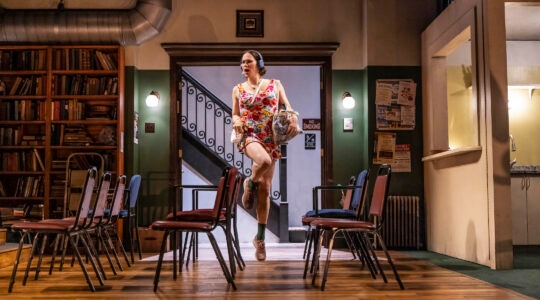Dallas may be sophisticated and Houston a booming business hub, but San Antonio — America’s seventh-largest city — remains the historical heart of urban Texas. It’s the place where a proud Jewish heritage meets mariachi culture in a Mexican-spiced hybrid, and where even the newest attractions have a historical twist.
The city recently completed an ambitious extension of its fabled River Walk, the network of waterside paths, bike paths and public spaces along the banks of the San Antonio River — a route that has enchanted urban pedestrians for nearly a century.
Visitors can now perambulate between the city’s downtown, stopping for margaritas, an art exhibition or an outdoor flamenco show before touring one of the original Spanish-colonial missions (now under consideration for UNESCO heritage status). Yes, some of those umbrella-shaded cafes on the river are national chains. But the canal-like atmosphere — in the shade of leafy green trees, a full story below the downtown office buildings — is unlike any other.
All summer long, the river vibrates with Hispanic rhythms at the Fiesta Noche del Río. Held at the Arneson Theatre — an outdoor performance space right on the riverbank — Fiesta offers weekend-evening performances of music and dance from Spain, Mexico, Argentina and Texas, from mariachi and tango to flamenco and polka. Dancers twirl in brightly colored skirts, and guitarists strum into the night in this popular Kiwanis fundraiser dating to the 1950s.
Summer fever reaches its zenith on Aug. 31, when “Margarita Meltdown” ushers out the month with an outdoor River Walk party featuring — what else? — mariachi music, flowery leis and that most classic of Mexican cocktails in little plastic cups. It’s actually a competition to see which of San Antonio’s Mexican venues can concoct the best margarita, and the crowds on Maverick Plaza are happy to taste-test.
Both events are in La Villita, a tiny riverside historic district established nearly a century ago. And just a short stroll from these narrow alleys of quaint 19th-century buildings sits the river’s newest addition: the Briscoe Western Art Museum, which opened last year as the premier venue for art of the American frontier.
The Briscoe occupies a tastefully modern campus whose architecture and textured, burnished stone alludes to various Western aesthetics without descending into theme-park pastiche. Inside, the 40,000 square feet of gallery space tell the story of the American West across five centuries. You can imagine life inside a covered wagon or the Wells Fargo stagecoach, both on display, and gawk at Pancho Villa’s saddle and Santa Anna’s sword. Woven Apache baskets, Hopi dolls and paintings of cowboys and Indians round out a familiar narrative.
Jews have long been among the pioneers in this frontier city, flocking here as early as the 1700s. Just as Ellis Island shaped Jewish New York, the San Antonio Jewish community was solidified by a wave of late-19th-century European immigration into the port of Galveston, only a few hundred miles away.
Temple Beth-El, founded in 1874, is the oldest congregation in San Antonio and one of the oldest in the state, helping to establish Reform Judaism in the American South. Today its 1920s building — smack in the city’s heart — is a landmark for its burnt-orange dome and graceful white façade, and it is host to multiple Reform services just a block from San Pedro Park.
Over in the city’s northwest corner, the Harry and Jeanette Weinberg Campus of the San Antonio Jewish Community is a nexus of Jewish culture and community. In addition to Federation and Family Services, the Weinberg Campus houses the Barshop Jewish Community Center, where live theater and the Holocaust Memorial Museum draw religiously diverse crowds.
Most weekends from September through May, theatergoers flock to Barshop’s Sheldon Vexler Theatre for its notable lineup of plays — some with Jewish themes or authors, such as Neil Simon’s “Rumors” (up next spring), and other plays of more universal provenance, such as “The Trojan Women” by Euripides. The season kicks off next month with “One Flew Over the Cuckoo’s Nest” by Dale Wasserman.
But the biggest news this fall is the grand opening of the Tobin Center for the Performing Arts — a spectacular new campus by the river that will bring together San Antonio’s major arts institutions, including its resident symphony orchestra, ballet company, opera, chamber ensembles and children’s series.
An outdoor performance plaza will connect the 1,759-seat performance hall and 250-seat studio theater with the River Walk, where water taxis will whisk visitors to shows featuring such artists as Itzhak Perlman, Renée Fleming, Garrison Keillor and Art Garfunkel.
In the heat of a Texas summer, down by the river is the place to be.
The New York Jewish Week brings you the stories behind the headlines, keeping you connected to Jewish life in New York. Help sustain the reporting you trust by donating today.




